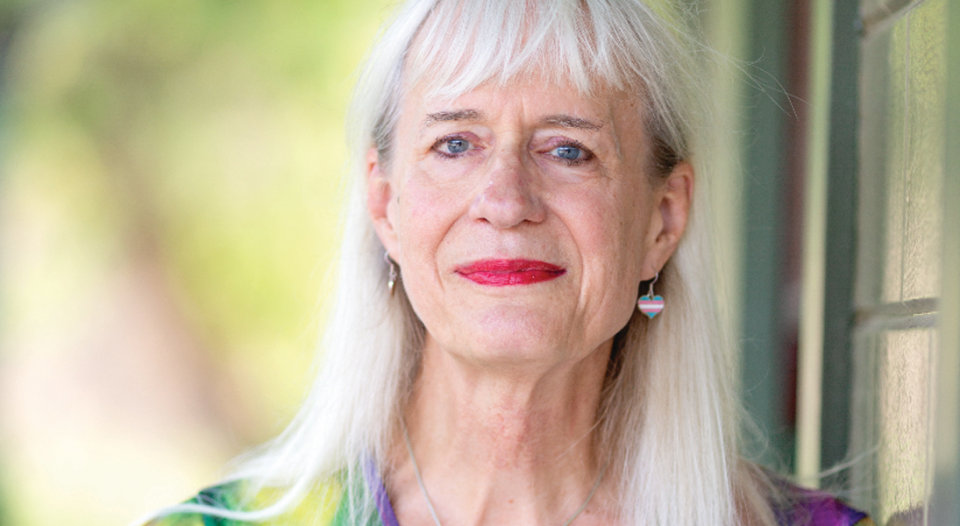I am a transgender woman. I’m also a person of faith—an active member of and leader in my ELCA congregation. I’m sure the Lord guided my journey toward becoming a woman, an activist and an author.
My mother named me Mark, and for nine years I acted the role of a boy. Then I discovered skirts.
In 1988 my wife, Beth (last names withheld for privacy), gave me a brochure for a social group for people who were then called cross-dressers. She helped me with my makeup, and we drove two hours from Columbus, Ohio, to Cleveland for monthly meetings. There I could safely spend a few precious hours as Mary Ann, feeling more at ease than in my male life. I was deeply in the closet.
In 1997, I came out to my teenage sons. Beth and I called a family meeting, sharing that I lived part of my life as a woman, and that it was OK. My sons accepted me, with two conditions: “Don’t come to our school or our church as Mary Ann.” They said they would be bullied if other students found out.
As Mark, I worked as an engineer for Lucent Technologies in Columbus. When gay or lesbian colleagues came out at work, they became more productive because they no longer wasted energy hiding part of themselves.
Lucent’s policy at the time forbade “sexual orientation” discrimination but didn’t protect me. I urged the human resources department to add trans-inclusive language, and in 1997 Lucent became the first Fortune 500 company to formally protect trans workers. I came out at work and was free to be Mary Ann whenever appropriate. Now a budding activist, I pushed for trans equality and health benefits in workplaces nationwide. Today 91% of large U.S. companies protect gender identity.
A call to worship as myself
Soon I felt a strong calling to worship in “girl mode.” Withholding such a big part of my life from God’s house felt wrong. But I’d promised my sons.
I consulted a list of local gay-friendly businesses, looking for other, welcoming churches. I spotted Redeemer Lutheran Church in Columbus, with its Reconciled in Christ (RIC) welcoming certification. On Easter morning, dressed in my new cranberry skirt suit, I was warmly welcomed by Redeemer’s greeter. She introduced me to John, a gay member who served on the congregation council. John introduced me to Katheryn, a lesbian who became a lifelong friend. I sat with her and felt Christ’s uplifting spirit throughout Pastor Al’s upbeat service.
I wanted to come again. I asked John if people like me were welcome at Redeemer. “We welcome people regardless of sexual orientation,” he said.
“I’m afraid that doesn’t include me,” I replied. “Would you consider adding ‘gender identity’ to your welcome?” He said he’d ask the council.
I sat with her and felt Christ’s uplifting spirit throughout Pastor Al’s upbeat service.
The next month, John had news: “The council said ‘no.’” I was crushed. “But we’d be willing to be educated, and then reconsider,” he added.
I asked for help from a social worker I knew who guided transgender people. “We can have a panel of trans people speak to the congregation,” she offered. When she asked if I would be on the panel, I was honored. We presented to the congregation, telling our stories. A month later the council voted to include transgender worshipers in Redeemer’s formal welcome.
John invited me to join Lutherans Concerned/North America (LC/NA, since renamed ReconcilingWorks), a group for full lesbian and gay participation in the ELCA. At the time, California congregations in San Francisco and Berkeley had risked banishment for calling gay or lesbian pastors, and any pastor who blessed a same-sex union risked disciplinary action. Trans people assumed we would also be turned away from full participation. For LC/NA, trans inclusion wasn’t on the radar.
I met LC/NA’s gay and lesbian leaders at their 1998 national assembly in Chicago. As the only trans person there, it fell on me to educate attendees. As I shared my story and how grateful I was that the RIC program had brought me to a welcoming congregation, their faces turned empathetic. That weekend we laid the groundwork for trans-inclusive language. Today RIC congregations welcome “people of all sexual orientations, gender identities and gender expressions.”
Coming home
Three years later the dot-com bubble burst and I found myself job hunting. I wanted to work as Mary Ann, to experience life as a woman full time. My dear wife respected my integrity. “But,” she said, “I never signed up to be married to a woman.” We split as friends.
God led me to move to San Diego in 2007. When I visited First Lutheran Church there, I felt as if I’d finally come home. Gay and straight, rich and poor, we were all one in Christ. Being trans didn’t matter—I fit in seamlessly. Within a few years I was on the congregation council, served as an assisting minister and organized our congregation’s march in the San Diego pride parade.
I met Katie and we fell in love. We were thrilled when my friend Jim, an ELCA pastor, married us in Columbus, and when First Lutheran Pastor Kurt added a blessing at our reception. Today my life with her in San Diego feels as if I’m already in heaven.
Horton’s memoir, Trailblazer: Lighting the Path for Transgender Equality in Corporate America, tells her story of self-discovery, activism and spirituality. Learn more at maryannhorton.com.





